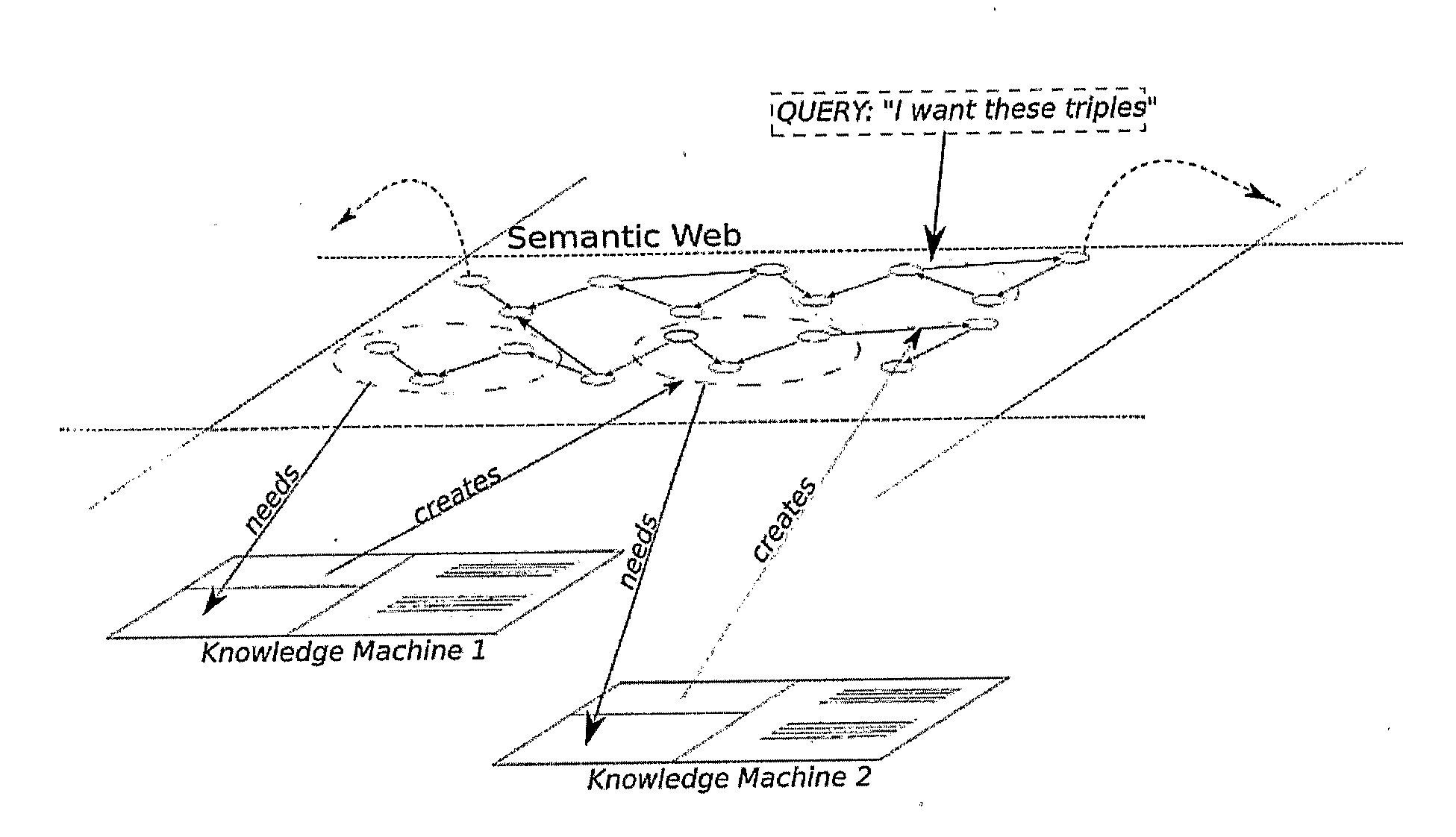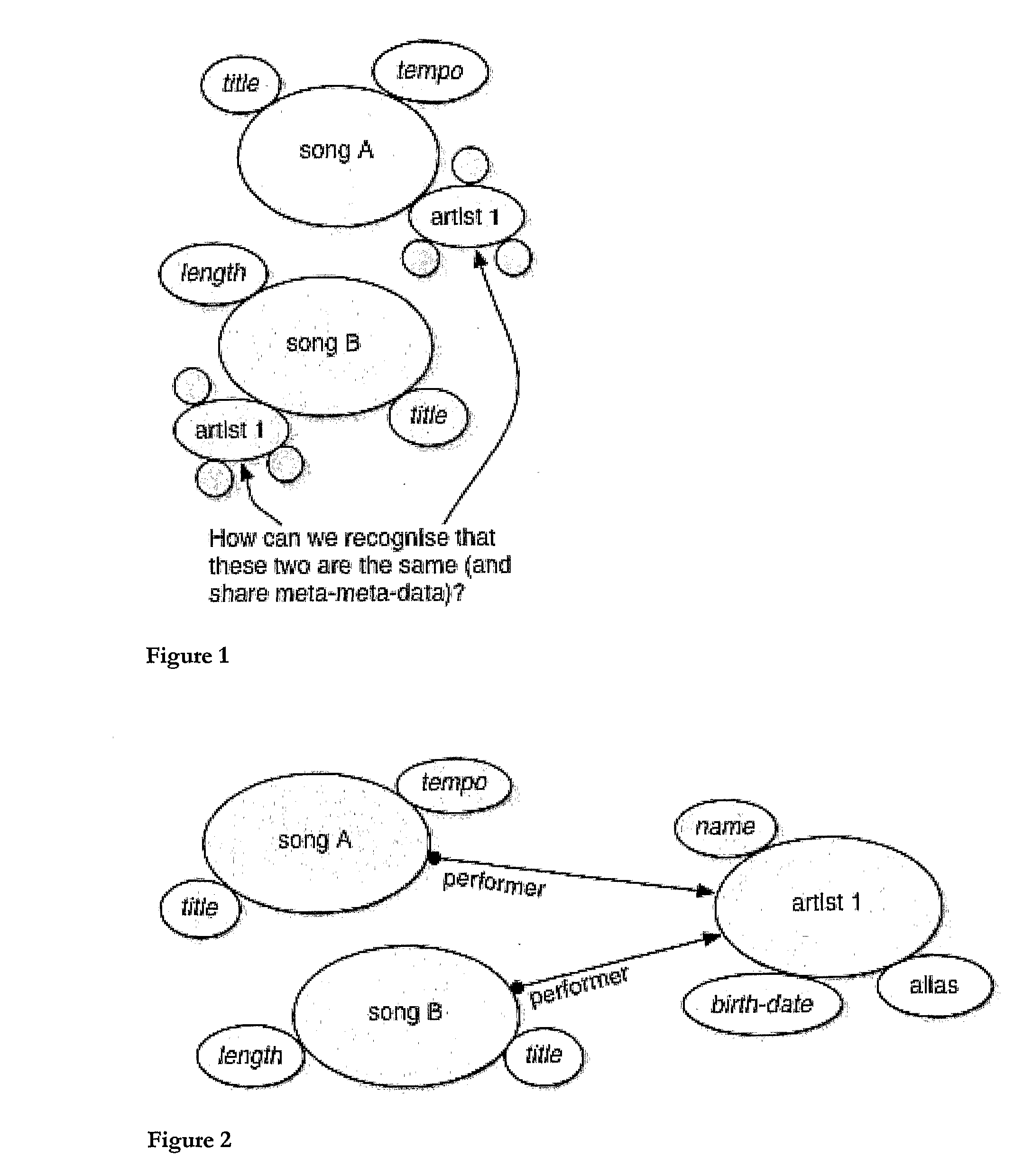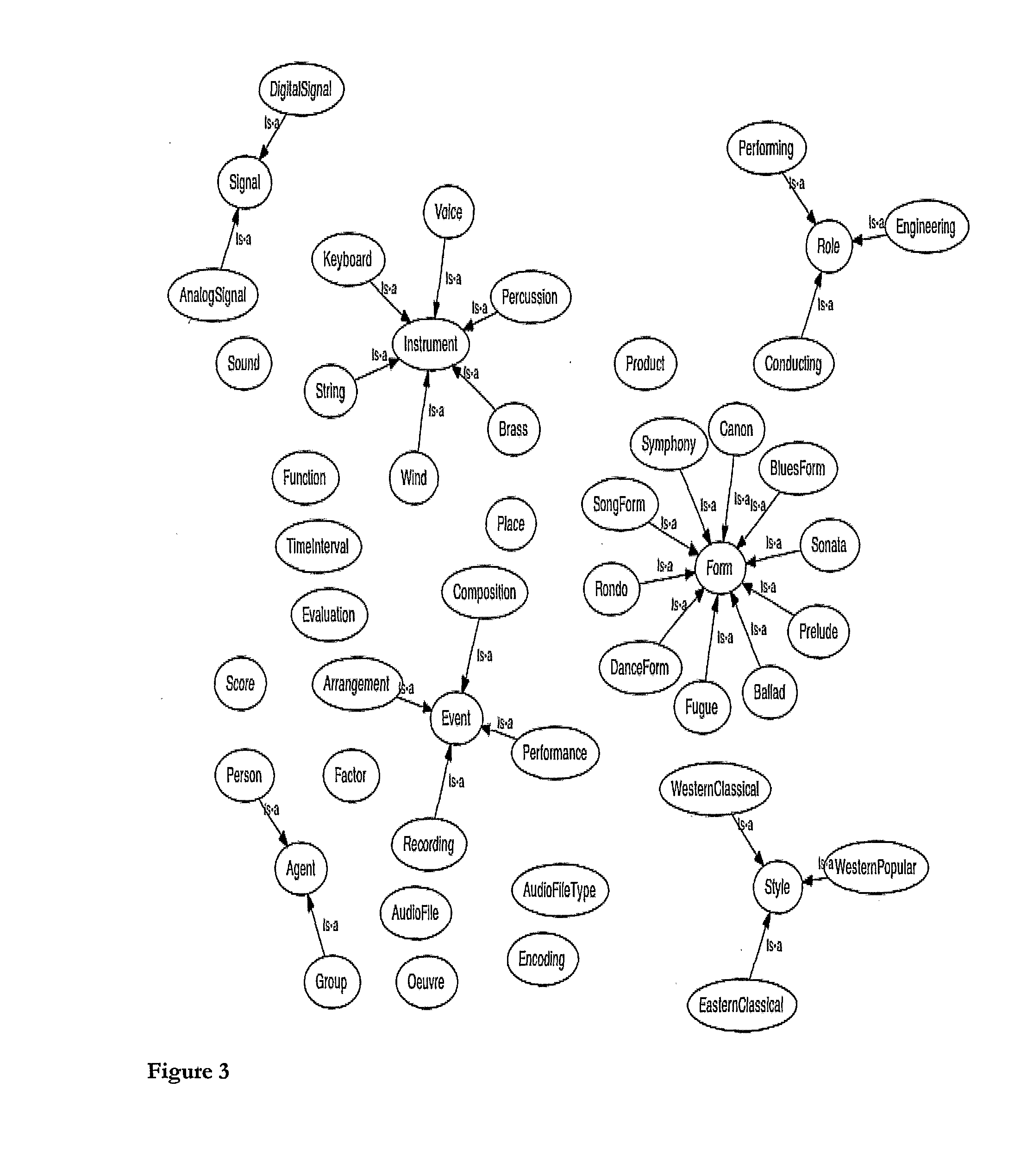Method of analyzing audio, music or video data
- Summary
- Abstract
- Description
- Claims
- Application Information
AI Technical Summary
Benefits of technology
Problems solved by technology
Method used
Image
Examples
Embodiment Construction
1. General Overview
[0118]We describe a knowledge management framework that addresses the needs of multimedia analysis projects and provides an anchor for information retrieval systems. The framework uses Semantic Web technologies to provide a distributed knowledge environment, and active Knowledge Machines, wrapping multimedia processing tools, to exploit and / or contribute to this environment—see FIG. 5 for a high level view of the interaction of Knowledge Machines and the Internet or Semantic Web. This framework is modular and able to share intermediate steps in processing. It is applicable to a large range of use-cases, from an enhanced workspace for researchers to end-user information access. In such cases, the combination of source data, intermediate results, alternate computational strategies, and free parameters quickly generates a large result-set bringing significant information management problems.
[0119]This scenario points to a relational data model, where different relati...
PUM
 Login to View More
Login to View More Abstract
Description
Claims
Application Information
 Login to View More
Login to View More - R&D
- Intellectual Property
- Life Sciences
- Materials
- Tech Scout
- Unparalleled Data Quality
- Higher Quality Content
- 60% Fewer Hallucinations
Browse by: Latest US Patents, China's latest patents, Technical Efficacy Thesaurus, Application Domain, Technology Topic, Popular Technical Reports.
© 2025 PatSnap. All rights reserved.Legal|Privacy policy|Modern Slavery Act Transparency Statement|Sitemap|About US| Contact US: help@patsnap.com



